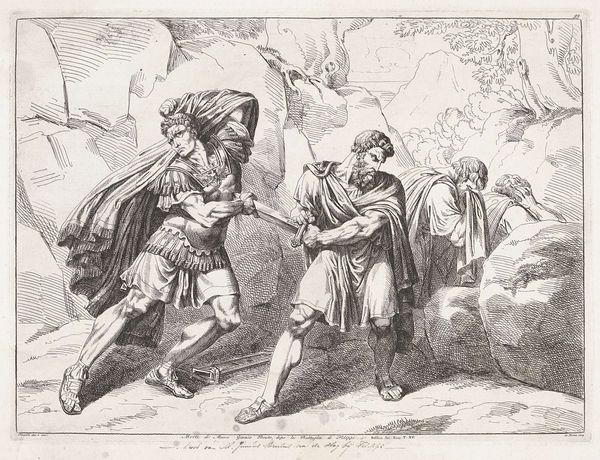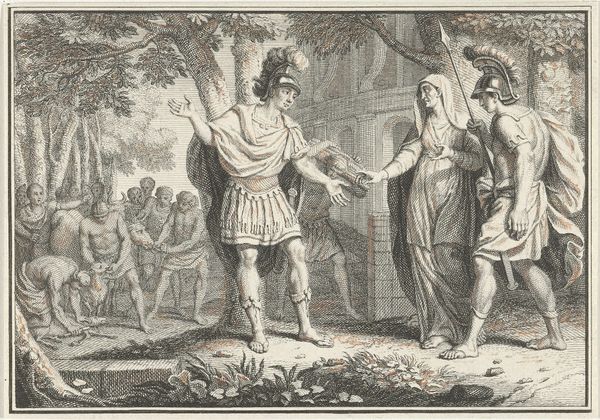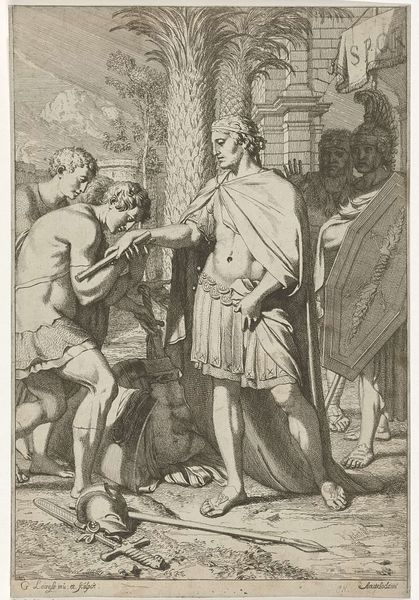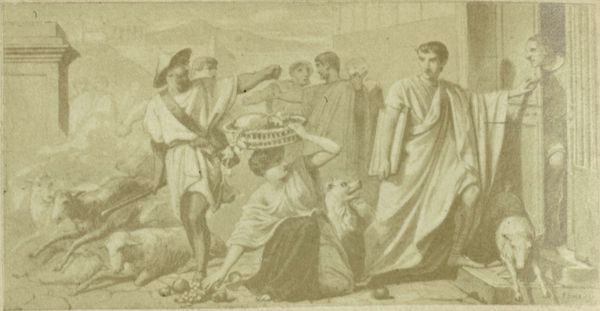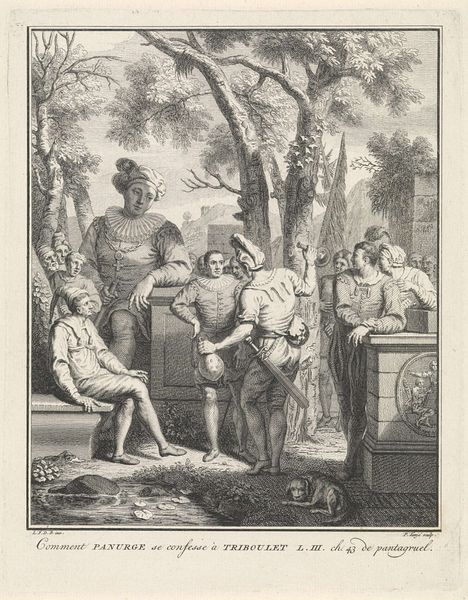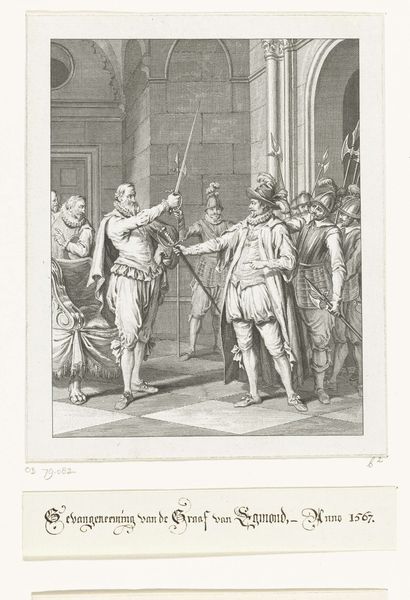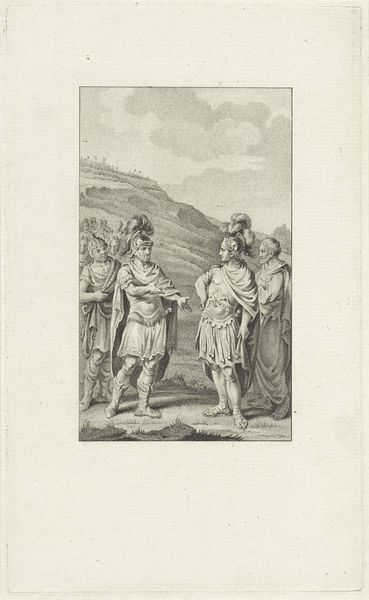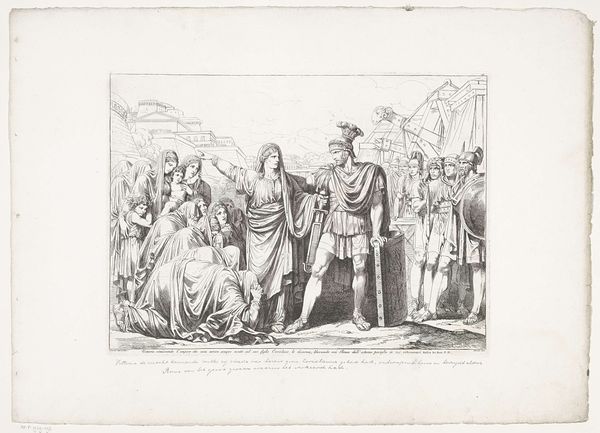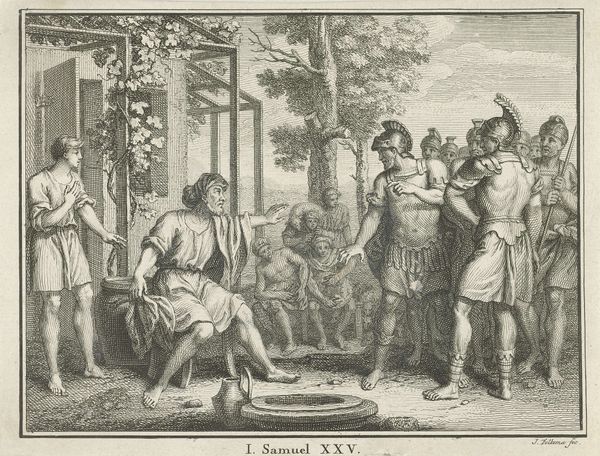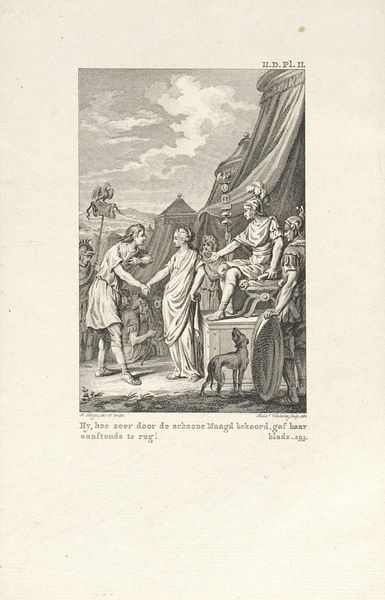
drawing, print, engraving
#
drawing
#
neoclacissism
# print
#
pencil sketch
#
landscape
#
classical-realism
#
figuration
#
pen-ink sketch
#
line
#
history-painting
#
academic-art
#
engraving
Dimensions: height 315 mm, width 424 mm
Copyright: Rijks Museum: Open Domain
Editor: Here we have Bartolomeo Pinelli's print, "Lepidus, Octavianus en Marcus Antonius maken een lijst," created in 1818. It looks like a pen-and-ink sketch, and has a classical style. What strikes me is how raw and immediate the whole thing feels; you can almost see the artist at work. What stands out to you in this piece? Curator: Immediately, my eye is drawn to the process itself. This print, an engraving based on a drawing, represents a deliberate attempt to mass-produce and distribute a specific, perhaps even politically charged, historical narrative. Who were these historical figures for Pinelli, and for his audience? It’s worth asking what materials were accessible, who controlled them, and how they impacted the final product. Editor: So, you're saying the choice of printmaking influenced how the story of Lepidus, Octavian, and Antony was told? Curator: Absolutely. Consider the social context: Printmaking allowed Pinelli to reach a wider audience than, say, a single painting commissioned by a wealthy patron could. We have to consider not just the content, but the *means* of its dissemination. Was this designed to be circulated as propaganda, influencing popular opinion through its easily reproduced image and historical narrative? Editor: That’s a completely different angle than I was expecting! Thinking about who had access to these prints, and what message they would receive is fascinating. Curator: Exactly. By considering the labor, materials, and consumption of art, we start to understand how images like these were – and still are – active participants in shaping our understanding of the world. Ultimately, it prompts a reassessment of artistic skill; it is in Pinelli’s astute manipulation of readily-available resources that makes this more compelling. Editor: This has given me so much to think about, like the print’s role in disseminating ideas, instead of just admiring its classical style. Curator: Precisely! Thinking about art's production and consumption opens a richer appreciation.
Comments
No comments
Be the first to comment and join the conversation on the ultimate creative platform.
